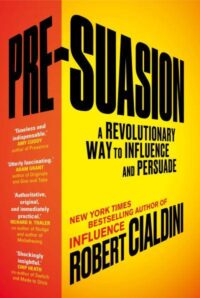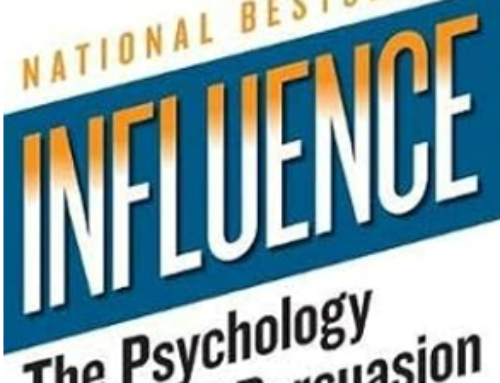Reading Notes for:


PROCESSES: THE ROLE OF ASSOCIATION
The Primacy of Associations: I Link, Therefore I Think
In the family of ideas, there are no orphans. Each notion exists within a network of relatives linked through a shared system of associations.
Just as amino acids can be called the building blocks of life, associations can be called the building blocks of thought.
We convince others by using language that manages their mental associations to our message. Their thoughts, perceptions, and emotional reactions merely proceed from those associations.
The main purpose of speech is to direct listeners’ attention to a selected sector of reality. Once that is accomplished, the listeners’ existing associations to the now-spotlighted sector will take over to determine the reaction.
No longer should we think of language as primarily a mechanism of conveyance; as a means for delivering a communicator’s conception of reality. Instead, we should think of language as primarily a mechanism of influence;
When describing our evaluation of a film, for instance, the intent is not so much to explain our position to others as to persuade them to it. We achieve the goal by employing language that orients recipients to those regions of reality stocked with associations favorable to our view.
Especially interesting are the linguistic devices that researchers have identified for driving attention to one or another aspect of reality. They include verbs that draw attention to concrete features of a situation, adjectives that pull one’s focus onto the traits (versus behaviors) of others, personal pronouns that highlight existing relationships, metaphors that frame a state of affairs so that it is interpreted in a singular way, or just particular wordings that link to targeted thoughts.
Speak No Evil, Leak No Evil
SSM Health—a not-for-profit system of hospitals, nursing homes, and related entities— First health care provider to be designated a Malcolm Baldrige National Quality Award winner.
“Your presentation is not to include bullet points, and you are not to tell us how to attack our influence problems.” When I protested that removing these elements would weaken my talk, Steve responded, “Oh, you can keep them in; you just have to call them something else.” My cleverly phrased comeback—I believe it was, “Uh . . . what?”—got Steve to elaborate: “As a health care organization, we’re devoted to acts of healing, so we never use language associated with violence. We don’t have bullet points; we have information points. We don’t attack a problem, we approach it.”
“We’ve replaced business targets with business goals. And one of those goals is no longer to beat our competition; it’s to outdistance or outpace them.” He even offered an impassioned rationale: “Can’t you see how much better it is for us to associate ourselves with concepts like ‘goal’ and ‘outdistance’ than ‘target’ and ‘beat’?”
In the study, subjects completed a task requiring them to arrange thirty sets of scrambled words to make coherent sentences. For half of the subjects, when the words they were given were arranged correctly, they resulted mostly in sentences associated with aggression; for example, “hit he them” became “he hit them.” For the other half of the subjects, when the words they were given were arranged correctly, they resulted mostly in sentences with no connections to aggression;
Later, all the subjects participated in another task in which they had to deliver twenty electric shocks to a fellow subject and got to decide how painful the required shocks would be. The results are alarming: prior exposure to the violence-linked words led to a 48 percent jump in selected shock intensity.
Multiple studies have shown that subtly exposing individuals to words that connote achievement (win, attain, succeed, master) increases their performance on an assigned task and more than doubles their willingness to keep working at it.
I’ve since become aware of a project those researchers undertook to influence the productivity of fund-raisers who operated out of a call center. At the start of callers’ work shifts, all were given information designed to help them communicate the value of contributing to the cause for which they were soliciting (a local university). Some of the callers got the information printed on plain paper. Other callers got the identical information printed on paper carrying a photo of a runner winning a race. It was a photo that had previously been shown to stir achievement-related thinking. Remarkably, by the end of their three-hour shifts, the second sample of callers had raised 60 percent more money than their otherwise comparable coworkers.

